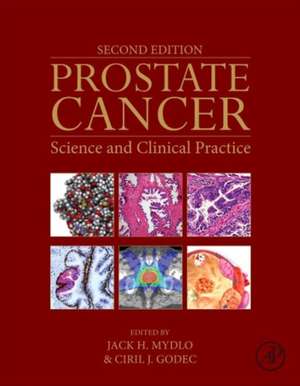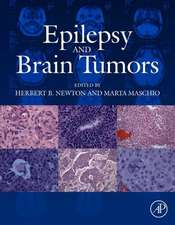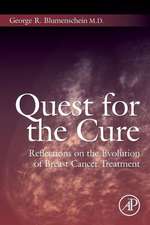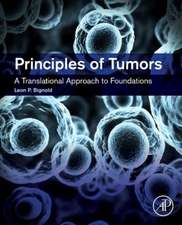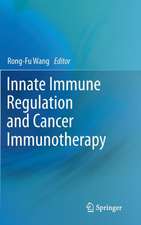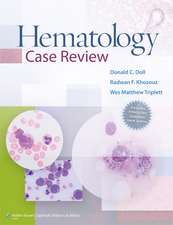Prostate Cancer: Science and Clinical Practice
Editat de Jack H. Mydlo, Ciril J. Godecen Limba Engleză Hardback – 18 oct 2015
Key chapters from the previous edition have been updated, and a plethora of new chapters describe new concepts of prostate cancer biology and newly developed therapeutics. Each chapter has been written by internationally recognized specialists on prostate cancer epidemiology, genetic susceptibility, cancer metastases, prostate physiology, proteomics, new therapeutics, and clinical trials.
- Presents a comprehensive, translational source for all aspects of prostate cancer in one reference work
- Provides a common language for cancer researchers, oncologists, and urologists to discuss prostate tumors and how prostate cancer metastases affects other major organ systems
- Offers insights to research clinicians, giving them a key understanding the molecular basis of prostate cancer
- Offers insights to cancer researchers into how clinical observations and practices can feed back into the research cycle and, therefore, can contribute to the development of more targeted genomic and proteomic assays
Preț: 868.08 lei
Preț vechi: 913.76 lei
-5% Nou
Puncte Express: 1302
Preț estimativ în valută:
166.11€ • 173.09$ • 137.54£
166.11€ • 173.09$ • 137.54£
Carte tipărită la comandă
Livrare economică 27 martie-10 aprilie
Preluare comenzi: 021 569.72.76
Specificații
ISBN-13: 9780128000779
ISBN-10: 0128000775
Pagini: 672
Dimensiuni: 216 x 276 x 36 mm
Greutate: 2.04 kg
Ediția:Revised
Editura: ELSEVIER SCIENCE
ISBN-10: 0128000775
Pagini: 672
Dimensiuni: 216 x 276 x 36 mm
Greutate: 2.04 kg
Ediția:Revised
Editura: ELSEVIER SCIENCE
Cuprins
Part I: Etiology, Pathology and Tumor Biology
Part II: Genetic Susceptibility and Hereditary Predisposition, Screening and Counseling
Part III: Epidemiology
Part IV: Prevention of Prostate Cancer
Part V: Conservative Management
Part VI: Surgery
Part VII: Radiation Therapy
Part VIII: Clinical dilemmas
Part IX: Advanced prostate cancer
Part X: Cryoablation, HIFU and Focal Therapy
Part XI: Cryoablation, HIFU and Focal Therapy
Part XII: Govermental Policies
Part XIII: New Horizons for Prostate Cancer
Part II: Genetic Susceptibility and Hereditary Predisposition, Screening and Counseling
Part III: Epidemiology
Part IV: Prevention of Prostate Cancer
Part V: Conservative Management
Part VI: Surgery
Part VII: Radiation Therapy
Part VIII: Clinical dilemmas
Part IX: Advanced prostate cancer
Part X: Cryoablation, HIFU and Focal Therapy
Part XI: Cryoablation, HIFU and Focal Therapy
Part XII: Govermental Policies
Part XIII: New Horizons for Prostate Cancer
Recenzii
"...of great value to students, residents, researchers, scientists, and practicing urologists...a necessary reference for anyone interested in prostate cancer. Its strength lies in its ability to cover all relevant aspects in one book. Score: 99 - 5 Stars" --Doody's
Descriere
Prostate Cancer, Science and Clinical Practice, Second Edition, continues to be an important translational reference that bridges the gap between science and clinical medicine. It reviews the biological processes that can be implicated in the disease, reviews current treatments, highlights the pitfalls where relevant, and examines the scientific developments that might result in future treatments. Key chapters from the previous edition have been updated, and a plethora of new chapters describe new concepts of prostate cancer biology and newly developed therapeutics. Each chapter has been written by internationally recognized specialists on prostate cancer epidemiology, genetic susceptibility, cancer metastases, prostate physiology, proteomics, new therapeutics, and clinical trials. * Presents a comprehensive, translational source for all aspects of prostate cancer in one reference work* Provides a common language for cancer researchers, oncologists, and urologists to discuss prostate tumors and how prostate cancer metastases affects other major organ systems* Offers insights to research clinicians, giving them a key understanding the molecular basis of prostate cancer* Offers insights to cancer researchers into how clinical observations and practices can feed back into the research cycle and, therefore, can contribute to the development of more targeted genomic and proteomic assays
